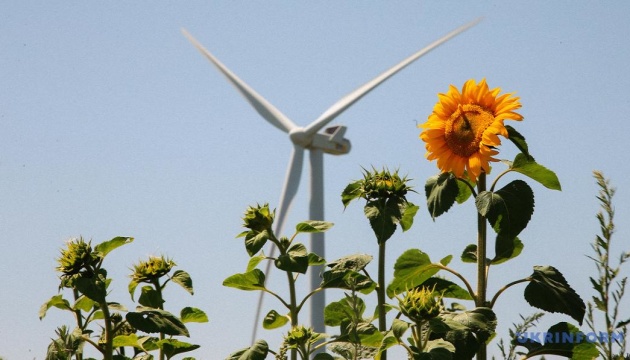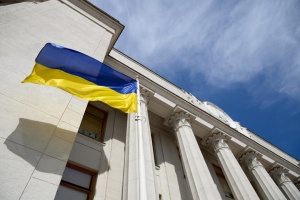
War footing for the energy sector: why Ukraine's energy security depends on renewable energy development
The Ukrainian energy sector has become one of the key targets of Russian attacks and has suffered significant damage. The most vulnerable were large thermal power plants (TPP), combined heat and power plants (CHPP), and transmission system transformers. In the face of constant shelling, the resilience of the power system can be strengthened by the availability of backup, autonomous and decentralized energy supply, including from renewable sources. That is, we need energy from the sun, wind, water, biomass, and biogas.
Speaking of restoration, it is necessary to ensure the supply of electricity to consumers, businesses, and especially critical infrastructure facilities by small energy sources. The construction of a large number of small generation and cogeneration facilities is the basis for energy system decentralization.
But at the same time, the war is shaping the reform agenda and signaling the need to put the energy sector on the so-called war footing - to re-profile it by further developing renewable energy.
The locomotive of reform is already on the rails
This year, the Verkhovna Rada of Ukraine passed Law No. 3220-IX on the restoration and green transformation of Ukraine's energy system.
This law, firstly, introduces a system of issuing guarantees of origin for electricity produced from renewable sources. This means that producers will be able to confirm the status of green electricity.
Why is this confirmation needed? Consumers, including European ones, will be able to make sure that the electricity they purchase and use does not result in additional carbon dioxide emissions and fulfill their obligations to reduce them.
By September 2024, Ukraine's National Energy and Utilities Regulatory Commission (NEURC) must ensure the creation of a register of issuance, use and termination of the guarantee of origin of electricity. This will implement the mechanism. The next step is to integrate the Ukrainian register into the regional register of the Energy Community.
A mechanism for guaranteeing the origin of electricity is also Ukraine's European integration commitment. It will help attracting investments in renewable energy and take advantage of export opportunities to the EU.
Second, a market premium mechanism is being introduced. This is a new mechanism for Ukraine to stimulate the production of electricity from renewable sources. Auctions will be introduced to allocate support quotas. Producers who are eligible for support based on the results of the auction will be provided with a market premium, which is calculated as the difference between the green tariff or auction price and the estimated price for electricity.
Third, Ukraine has a state-owned enterprise called Guaranteed Buyer (GB), which, among other things, buys electricity generated from renewable sources from producers. That is, the producer sold electricity once and was obliged to constantly sell its products to the GB. The law allows the producer to leave the balancing group of the GB and choose an alternative way to sell its electricity on the market, increasing competition, instead of guaranteeing the purchase of the entire volume of electricity at a fixed price. At the same time, in case of repeated conclusion of the agreement, the purchase and sale of green electricity at a green tariff is preserved.
Fourth, renewable energy producers and GB will be able to export electricity on market terms.
Fifth, the law introduces a net metering mechanism for households known as Net Billing. This system will allow consumers to become active participants in the energy market: to supply surplus electricity to the grid and pay only for the difference between the energy consumed and supplied. This approach also contributes to the efficient use of electricity.
This is not an exhaustive list of innovations and solutions proposed by the law. However, for everything to work, secondary legislation must be developed within six months from the date of its adoption and amendments must be made to the current legislation.
What is the current status of the development of secondary legislation?
The Ministry of Energy of Ukraine has recently published the text of a draft resolution of the Cabinet of Ministers of Ukraine on guarantees of origin of electricity produced from renewable sources. We expect this resolution to be adopted by the end of 2023. The concept of the State Targeted Economic Program to Stimulate the Development of Distributed Electricity Generation from Renewable Energy Sources until 2030 is also up for discussion.
In addition, the NEURC approved the Licensing Conditions for Conducting Business Activities for Electricity Distribution by Small Distribution Systems and the Licensing Conditions for Conducting Business Activities for Aggregation in the Electricity Market.
We also expect the NEURC to approve the following by the end of 2023:
- Approval of the procedure for the formation and maintenance of a register of power facilities and consumer power installations that use alternative energy sources for electricity generation.
- Approval of the procedure for determining the cost and payment for services based on the market premium mechanism and the standard form of the contract.
- Approval of the procedure for the sale and metering of electricity generated by active consumers and the form of a standard contract for the sale and purchase of electricity under the self-generation mechanism (applies to the Net Billing mechanism).
But is this enough to implement all the innovations of the law? No, it is not enough, but it is already about 80% of the way there, so that in 2024 Ukrainians can already assess the results of the law's implementation.
Increasing the share of renewable energy together with shunting generation = stable operation of the power system
It should be recalled that about 50% of generating capacities have been damaged, some of which cannot be restored. That is why the construction of shunting capacities will be of the utmost importance (namely, energy storage facilities, hydroelectric power plants, bioTPPs, bioCHPPs, as well as pumped-storage hydroelectricity and highly efficient modern peaking power plants). This will allow, in particular, introducing additional generating capacities to replace the destroyed ones and, as a result, ensure a stable supply of electricity to consumers.
Attracting investment will be a key step. But how to create a window of opportunity for business and build sufficient shunting capacity? To do this, we need to revise price caps, introduce long-term (3-5 years) auctions for ancillary services, and resolve the issue of accumulated debts in the balancing market.
Such decisions will be an important signal for investment and will provide further opportunities to increase the capacity of renewable energy sources and decarbonize the energy sector. The development of generation using, among other things, biogas and biomass will create markets for these raw materials and provide an opportunity for farmers to earn additional income.
The introduction of a market-based renewable energy concept is also worthy of note. It is closely related to the problem of green generation such as debt in the electricity market. The introduction of auctions for the distribution of support quotas is a new mechanism with a reduced burden on the GB, but not a solution for the existing system.
For context: to stimulate the increase in production from renewable energy sources, a mechanism was developed to impose special obligations on renewable energy sources. Thus, most renewable energy producers (except for large hydropower plants) receive revenues from green tariffs. They sell their electricity to the above-mentioned GB at a green tariff, and then the GB resells it on the wholesale market.
Since the wholesale market price is on average lower than the feed-in tariff, this creates losses for the GB. To cover these losses, Ukrenergo is obliged to compensate the difference to the GB through the transmission tariff. However, the established transmission tariff does not cover all of Ukrenergo's expenses, which creates debts for the performance of special obligations to the GB. An additional factor in the accumulation of debts is the deterioration of the payment discipline of market participants.
We expect the tariffs to be revised by the end of 2023. The regulatory procedure is currently underway. This will allow us to cover 100% of the service and partially repay debts from previous periods.
The market-based renewable energy concept will ensure legal, organizational, and technical conditions for the sustainable development of renewable energy on a competitive market basis, increase the share of renewable energy sources in the energy balance of Ukraine while ensuring the flexibility and sufficiency of generating capacities to cover the projected demand for electricity and provide the necessary reserve.




